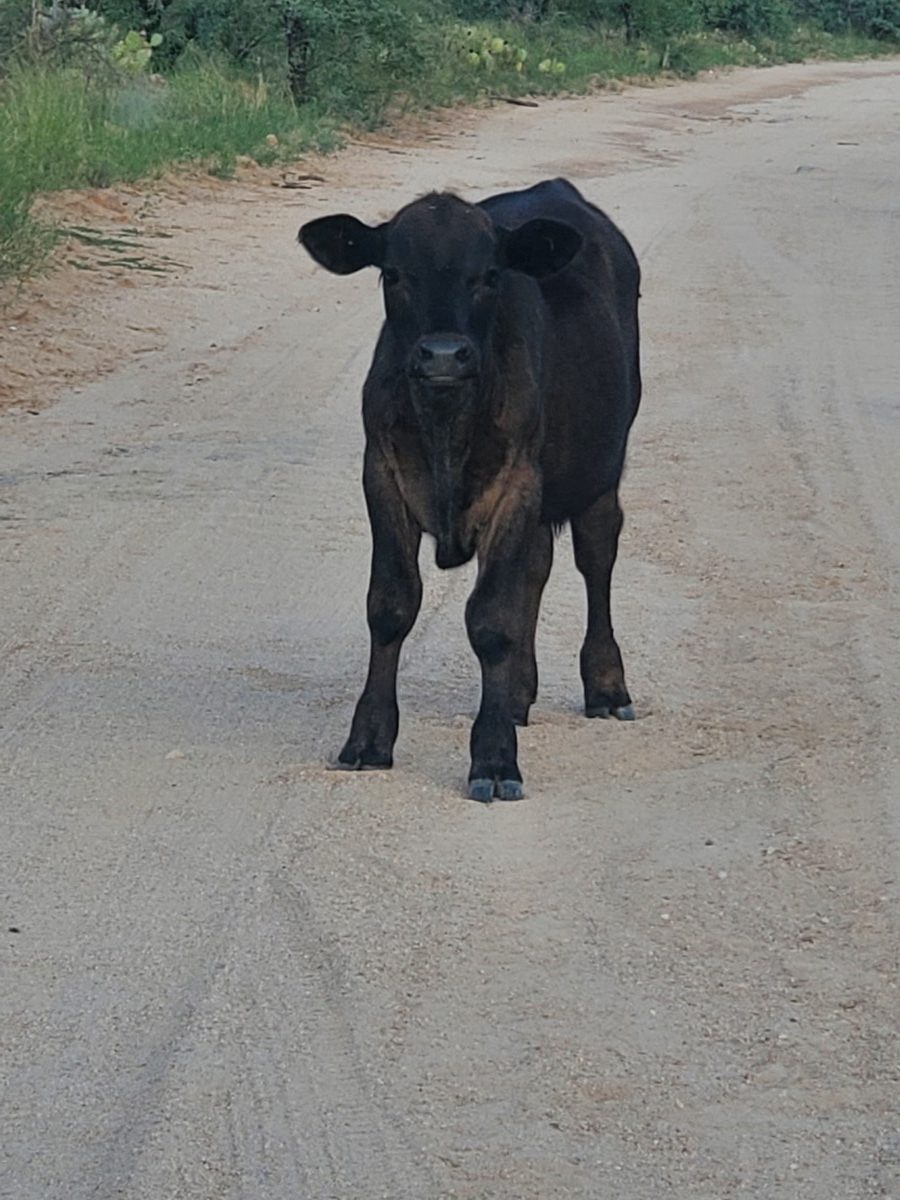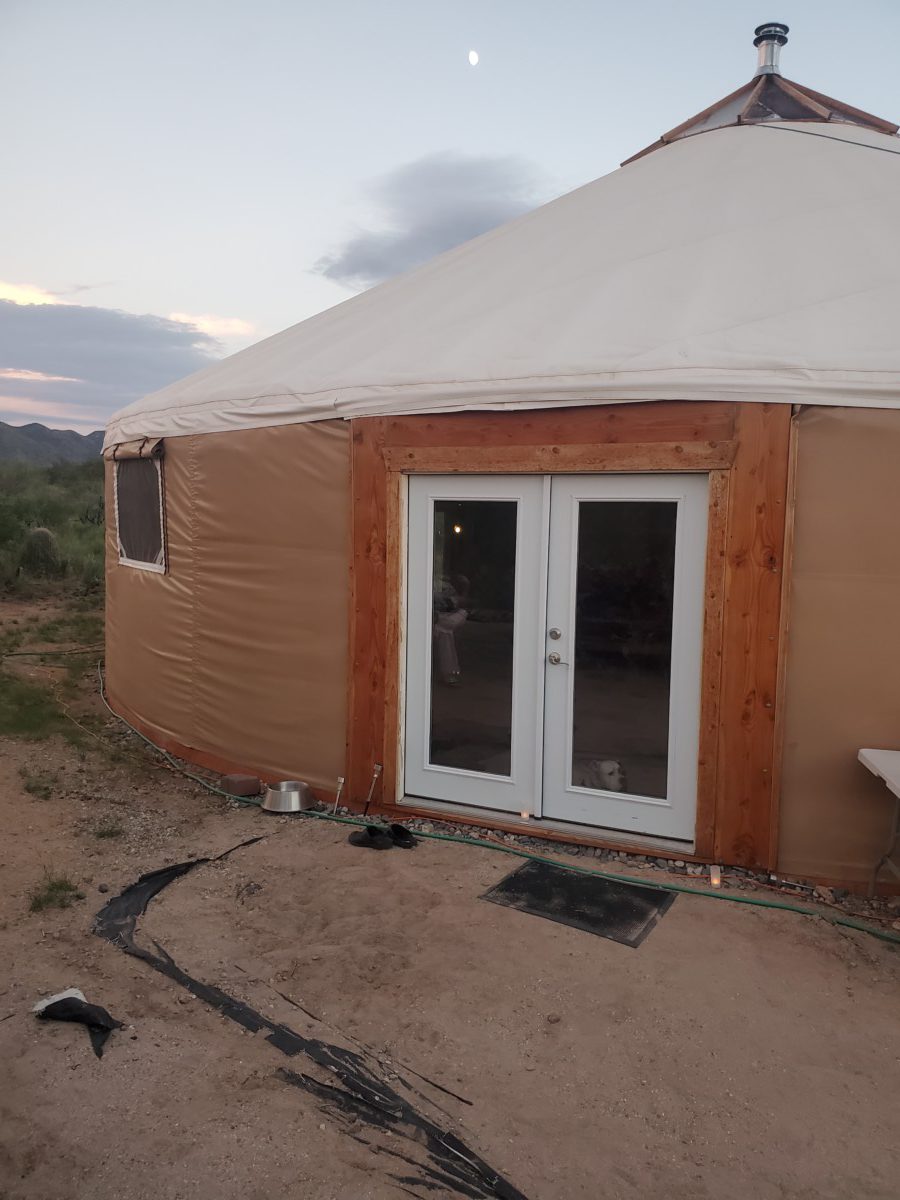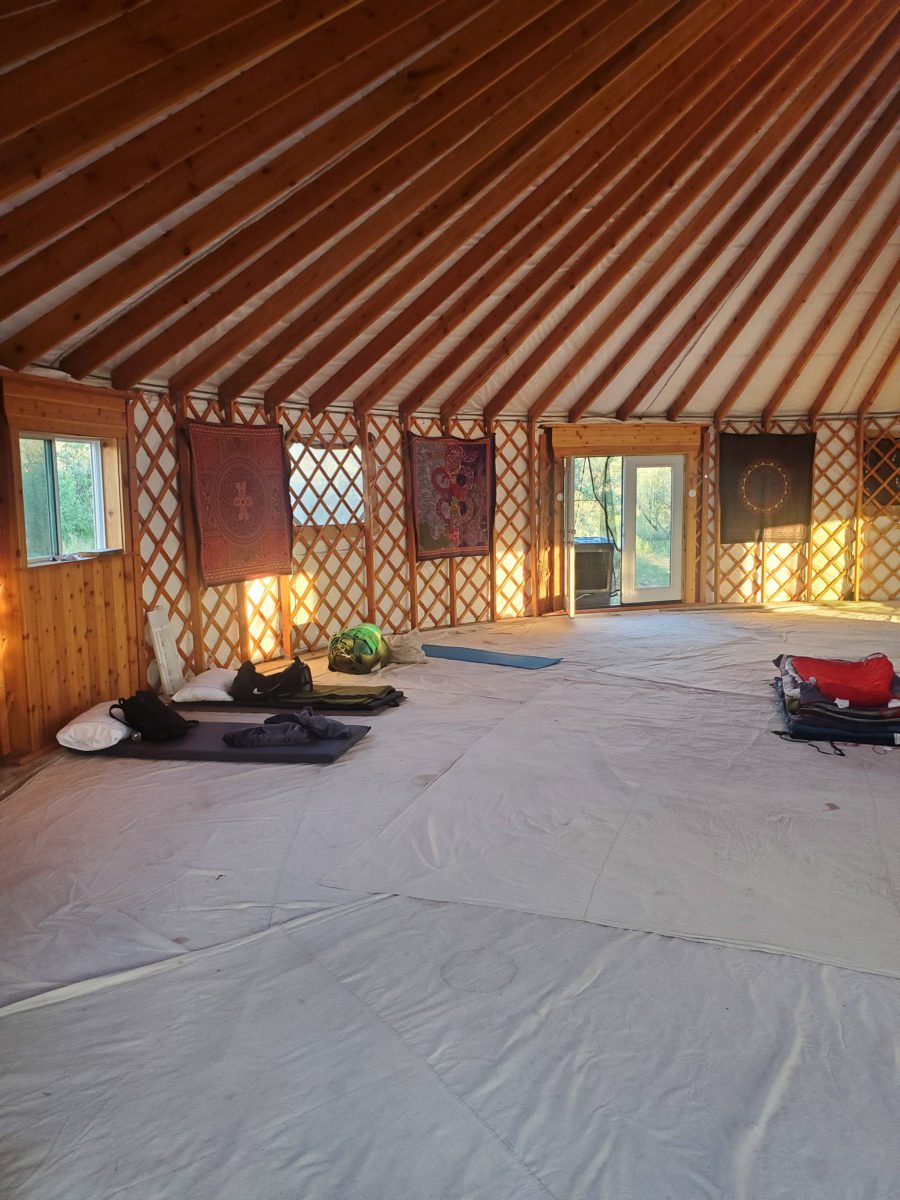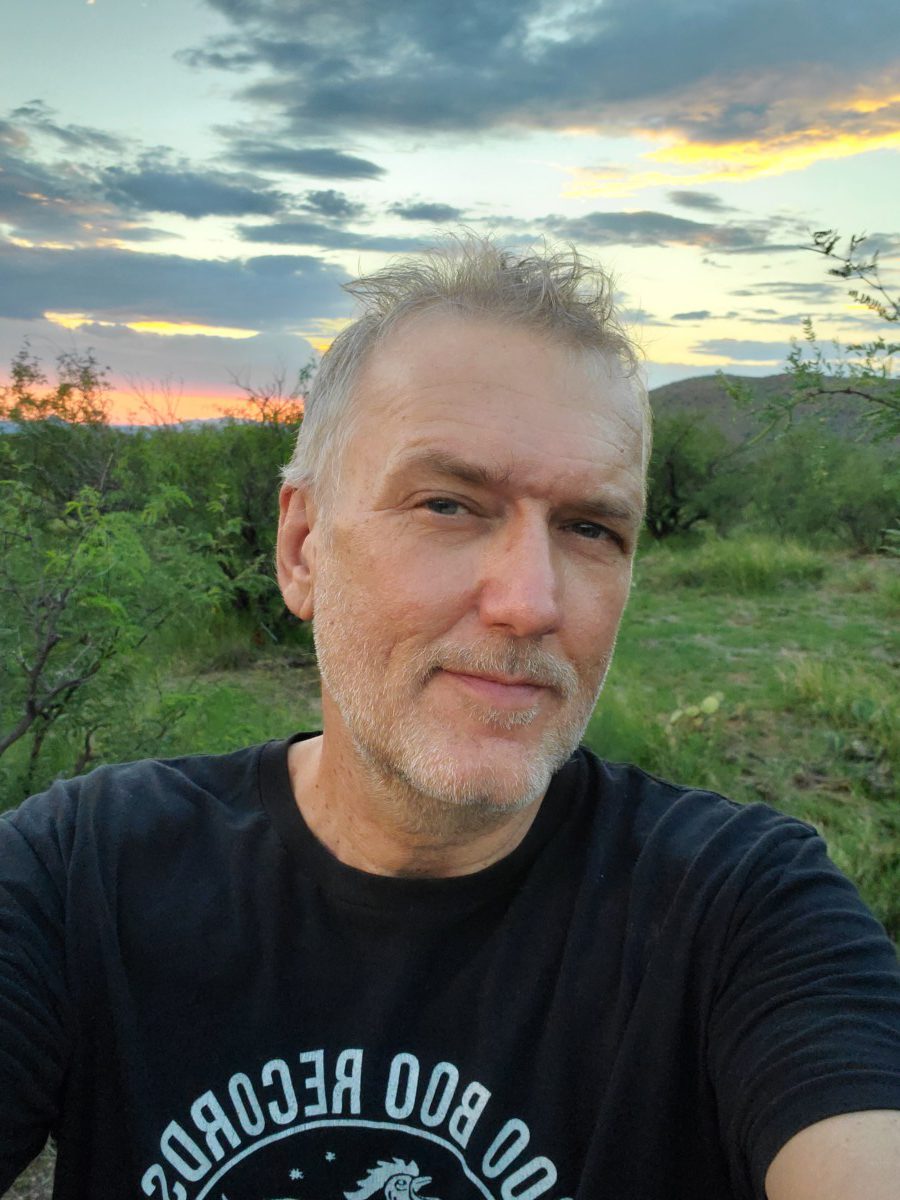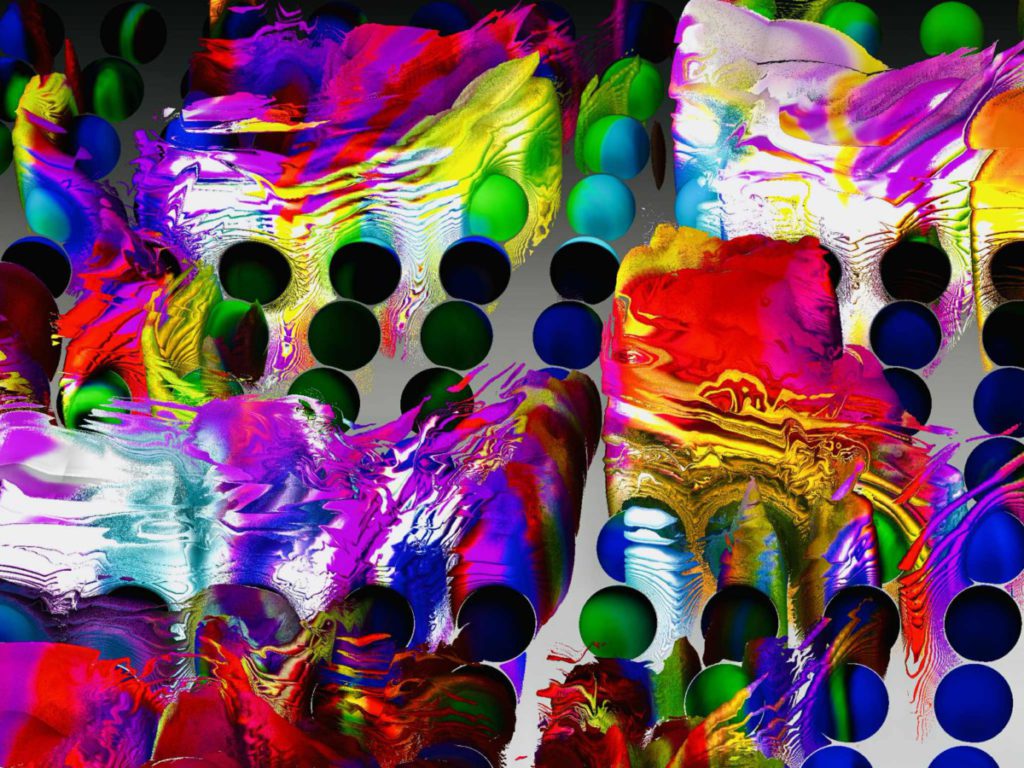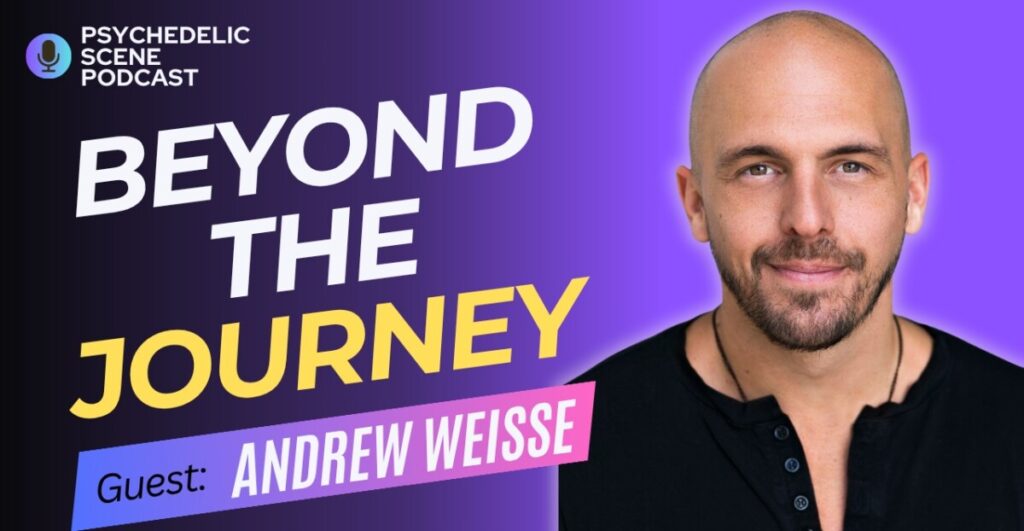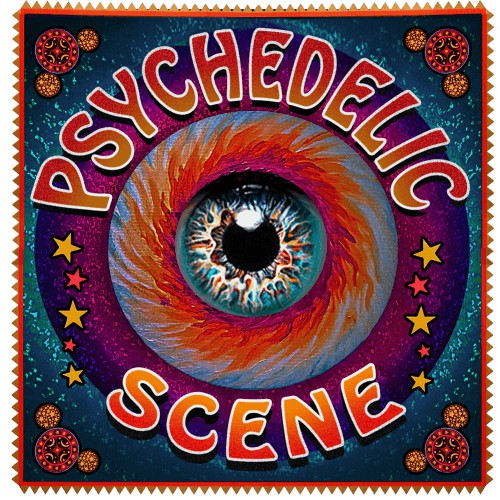My Ayahuasca Journey
My Ayahuasca Journey
With a week to go before my first Ayahuasca journey, I began the dieta, a purification of mind, body, and spirit, that is required of all ceremony participants. Entrants are required to forgo alcohol, marijuana, sex (including masturbation), dairy products, caffeine, red meat, fermented foods, and carbonated drinks. It’s not easy and I wasn’t perfect, but I impressed myself with how closely I stuck to it.
The ceremonial space where I planned to partake of the ayahuasca begins their events at midnight, which is another challenge because it means being up all night long—not something I find particularly appealing at my age.
Nonetheless, this was a unique opportunity. Most people who seek out ayahuasca end up traveling a lot farther than I had to.
Jason LeValley
Friday—Night #1
The ceremonies are held in the Sonoran Desert about 30 miles southwest of Tucson, where I currently reside. The dirt road drive to the ceremonial spot, at least on this particular evening, was quite beautiful. Due to the recent monsoons, the normally brown desert flora was very green. There were cows along the road, but one was right in the road, facing me—and standing in my way. I stopped the car, took a picture, and she ran off.
Although the ceremony doesn’t begin until the witching hour, everyone is asked to arrive between six and seven pm to settle in and get comfortable with the space. I’d been feeling depressed for a couple of weeks—which was at least one reason why I wanted to try ayahuasca, but my mood lightened when I arrived and met the other journeyers. I had a sense of my first day in college—getting to know people with whom I was going to have this unique experience. All of us seemed to feel the excitement in the air!
For the first hour or two, I hung outside the huge, beautiful yurt chatting with my fellow journeyers and finding out where they’re from and what they do, and hearing about their previous experiences with aya. When the sun set, everybody migrated inside and gravitated to the space along the interior wall where they’d put their sleeping bags, pillows, and other belongings. I was fortunate to be located next to an interesting and affable fellow who, with his balding forehead, longish brown hair, and black-framed glasses, reminded me of a young Allen Ginsberg.
Jason LeValley
A little after nine, a facilitator came and passed out regurgitation buckets to us. A friendly white pit bull mix wandered around saying hello to everyone and indulging himself in plentiful petting.
Another facilitator made the rounds offering sananga, an eyedrop that sharpens eyesight and “makes your vision pop.” It stung as if I’d rubbed my eyes with jalapeno juice on my fingers, but it did make my vision clearer and it felt good once the pain went away—which only took a minute or so.
A third facilitator came by and asked if I’d like sage, which has certain medicinal properties (e.g., antioxidants). When I said yes, and stood up, she asked me to hold my arms out and then waved a burning sage bundle around my body fanning it with a large feather.
Soon after, the head facilitator and founder of the organization Scott, a slightly built Caucasian male with a shaved head, asked all the first-time participants to huddle around him in the center of the space. He introduced himself, let everyone know how it works, and answered questions. Then we returned to our sleeping bag spaces. Nothing much seemed to happen for quite a while, and I dozed off. When I woke, it was time for the ceremony to begin.
Jason LeValley
Scott sat at the altar, which consisted of a dark brown table with myriad containers, various pipe-like instruments, feathers, an ashtray, small lit candles, and various other objects foreign to me, and invited the first-timers to approach. I walked quickly to the altar and plopped myself down on the throw pillow. He asked me my name and how I was doing, and then poured from a couple of bottles and handed me a small cup filled with a green brew. I put it to my lips and sent it down the hatch. It tasted every bit as bad as I’d heard; a shit smoothie could not have tasted worse.
I laid back against my pillows and waited. Within minutes, someone vomited loudly. Shortly, someone else across the yurt heaved into their bucket. One person began laughing manically—most likely to himself. Suddenly, the guy to my immediate left retched into his bucket. It sounded like he may have shat himself too. Uggh! It was getting closer. More and more puking was happening around the room. And finally, on my immediate right, Ginsberg emptied his guts into his pail with a loud retching sound.
Nothing was going on with me though, and I realized that I’d have to go up for seconds. Their policy is “open bar,” meaning anyone can return for as many cups as they’d like after the one-hour bell rings. When it rang, I jumped up and approached the altar again. And again, Scott asked me how I was doing. I told him I didn’t feel anything except for an upset stomach and some nausea. He told me he was going to blow tobacco smoke on me, something I knew was part of the Amazonian tradition. He leaned in uncomfortably close and blew the smoke on my neck, shoulders, back, and head. Then he said it would be good for me to have some hapé, a snuff, which I knew was another Amazonian custom. He took out a long, wooden pipe and held it up to my nose. I guided it to one nostril, and he blew on the other end of the pipe, which sent the smoke-flavored snuff shooting into my nasal passages, clearing them. He held the pipe up again, warning me that it might cause me to vomit. I placed it in my other nostril, and he blew into it again. I sneezed. He then handed me a cup of aya, and I drank it down. Almost immediately, I vomited into the bucket that he had pushed toward me. I took a tissue and wiped my mouth. Scott handed me another cup of brew, and I drank this one down without incident, returned to my designated area, and waited. I could hear people retching all around me. Then I heard singing—a beautiful, robust song in Spanish performed by several of the facilitators. It was a compelling juxtaposition of sounds—gut-heaving upchucks interlaced with lilting melody and heavenly harmonies.
Jason LeValley
But still, I felt nothing. Lying back against my pillows, eyes closed, I pondered: was I having some visuals? I wasn’t, at least none that were indicative of an altered state. I went back to the altar a third time.
I waited again in my space. Every so often I’d hear a song performed by one or more of the facilitators. The songs were lovely and well-executed—an unexpected entertainment bonus.
But I felt nothing—except disappointment. Was I being rejected by Mother Ayahuasca?
Wearily, I made my way back to the altar. There was someone else sitting on the pillow near Scott, so I sat on the floor resting my head on my knee. It must have been about three in the morning, and I was tired. In fact, I missed my turn as someone else stepped up to the pillow at the altar before I realized the previous seeker had gone. I waited as Scott mixed and filled a cup for that person. Finally, I approached and received my fourth cup. I went back to my spot and waited—until finally it dawned on me that it wasn’t going to happen for me that night, if ever.
I lay on my sleeping bag, feeling low, dozing lightly until morning activity. Several facilitators asked me how it was for me, and I told them. Apparently, some people just starting out can have a “gentle” experience. Unfortunately, I felt more depressed than I had before the ceremony. I ate a couple pieces of watermelon before heading home to eat, shower, and sleep.
Jason LeValley
Saturday—Night #2
Now a veteran, I waited until the newbies had taken their medicine before joining the other vets in line. When my turn came, I approached the altar and sat on the pillow next to Scott. He greeted me and I asked him if he had any mint spray (I’d heard this spray will completely negate the acrid taste of the ayahuasca. I doused my tongue with it. It helped. I drank the brew with less disgust than I had the night before.
I returned to my sleeping bag space, lay down with my head propped up against my pillows, and waited in the quiet dark. I felt myself gagging, leaned over my bucket, and vomited the dark green liquid that I’d swallowed just 20 minutes prior. Not long after, I noticed something happening—some psychoactivity. Abstract images, shapes, and patterns began dancing in front of my third eye—that invisible, mystical organ that sees beyond the realm of the ordinary. Suddenly, a full-on psychedelic scenario, like a beautiful, mad carnival, engulfed my visionscape.
I loved it! I wanted to go with the brilliance, but at the same time, it hit me hard that I was mentally and spiritually unwell and incapable of relishing this stunning vision that had presented itself. I could feel depression, anger, and angst weighing down my essence. I let out a pained wail—uncontrolled, ungodly, and horrific. Like a wounded animal, I shrieked again, my voice emanating from my body in a manner dictated entirely by necessity. I made the sound over and over; each wail exited my larynx in differently than the previous one, hitting various notes and tones.
It wasn’t like I was yelling at the top of my lungs; I wasn’t. While others in the room purged by vomiting, it seemed I was releasing bile from my gut through my vocal apparatus. Sometimes it was a whimper. Other times it was a groan. Occasionally, it came out in a viscous growl. Each emission was unique and seemed designed to extricate emotional pain from the various nooks and crannies of my internal organs. Like puking, it happened effortlessly—it was my body’s way of expunging trauma and years of suffering. I had flashes in my head of people who had hurt me, malicious people, and some of my yowls seemed to be in direct response to these painful memories.
Jason LeValley
I became conscious of the fact that there were other people in the room and got concerned that I was bothering them. So, I put one of my pillows in front of my face and re-directed my vocal emissions into it. They kept coming out. How long this continued I don’t know. Perception of time gets lost in a psychedelic journey, but I felt like it went on for hours.
At one point, a facilitator put her hand on my shoulder. I turned and asked her if I was being too loud. She nodded and suggested that I process silently, but I knew that wouldn’t work. My purge would only be effective if I continued to let my angst out in the guttural manner to which I was now accustomed. Fortunately, she mentioned that there was a sleeping bag in a self-contained unit outside of the yurt. I grabbed my pillows, found the room, and resumed my vocal emanations. I don’t know how long I continued, but twice a facilitator came by and asked if I needed anything. The woman who had tapped me on the shoulder earlier brought me some water. I drank a cup, thanked her, and picked up where I left off, groaning and wailing until I eventually tuckered myself out. I dozed off and woke up with the sun. Many of my fellow seekers were moving about, some already leaving.
I felt good. I had gotten some things out of my system. I was relieved that the aya had worked on the second try and delighted that I’d discovered my own method of purging. Although I had vomited at the beginning of my journey, the real purge came with my deep, dramatic wailing experience. I wondered if I had just learned a useful new tool for releasing painful emotions. It occurred to me that my newfound purge procedure bore a similarity to Primal Scream Therapy, the controversial brand of psychotherapy developed in the 1960s that promoted the release of emotions and feelings through screaming, shouting, or just making sounds.
The good feeling lasted for a week. When I woke up the following Saturday, my depressive symptoms had returned. I had hoped relief would last longer, but that was it. My respite was over.
But clearly my ayahuasca journey did something—even if only for a short time. The treatment of depression, or any troubles in the mind, is not a pure science. It’s a blend of chemical phenomena, emotional and spiritual processes, and perhaps more than anything the courage to try and do something to heal. It’s worth considering, isn’t it?
Related: Plant Teachers: Ayahuasca, Tobacco, and the Pursuit of Knowledge–book review
Gallery
Recent Articles
Artist Spotlight: Doug Leed
•
December 9, 2025
Podcast with Andrew Weisse: Beyond The Journey
•
December 5, 2025

Loading...
The Club Is Open by Radderall & Muzzy Fossa–Album Review
- Bill Kurzenberger

